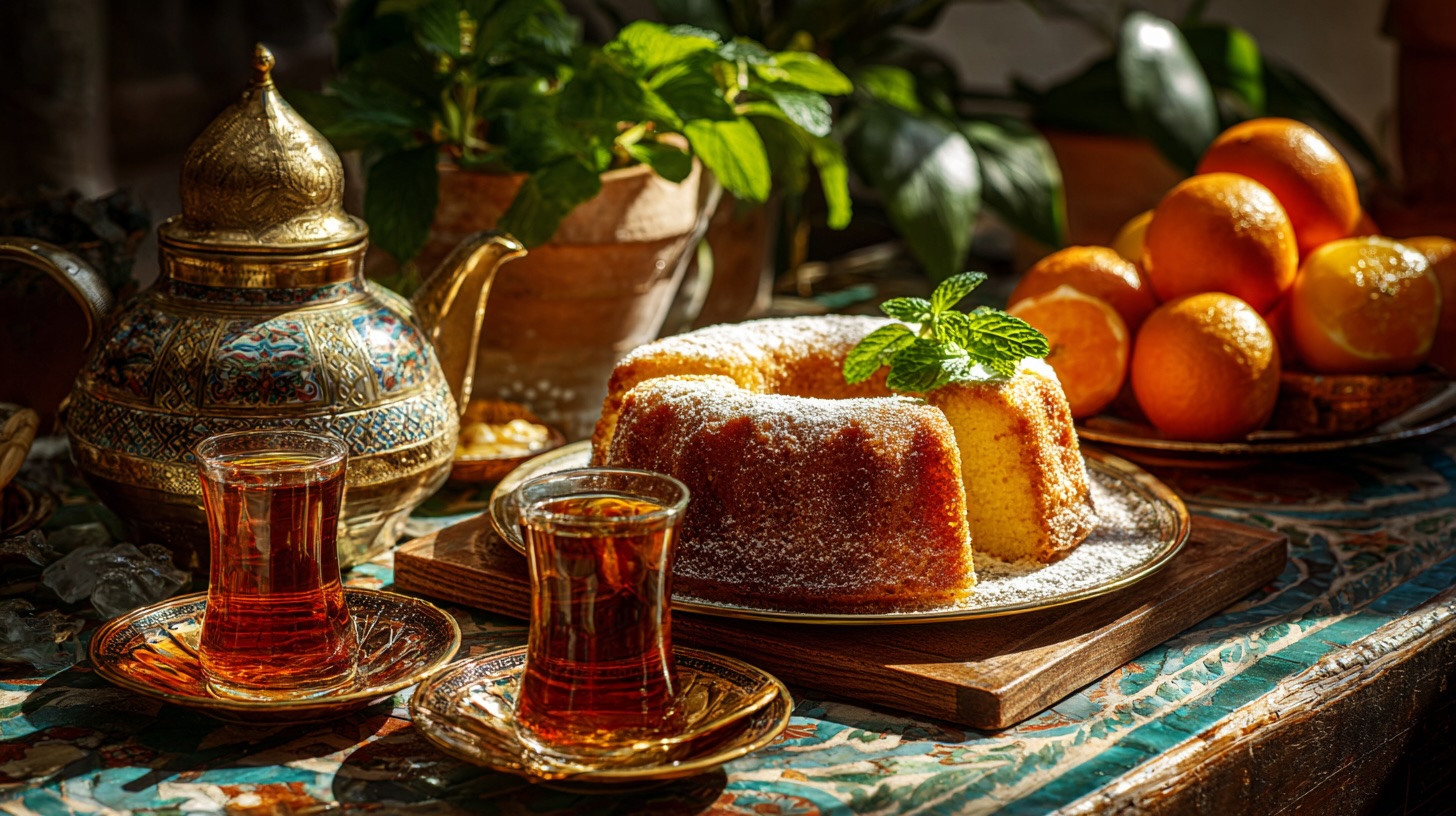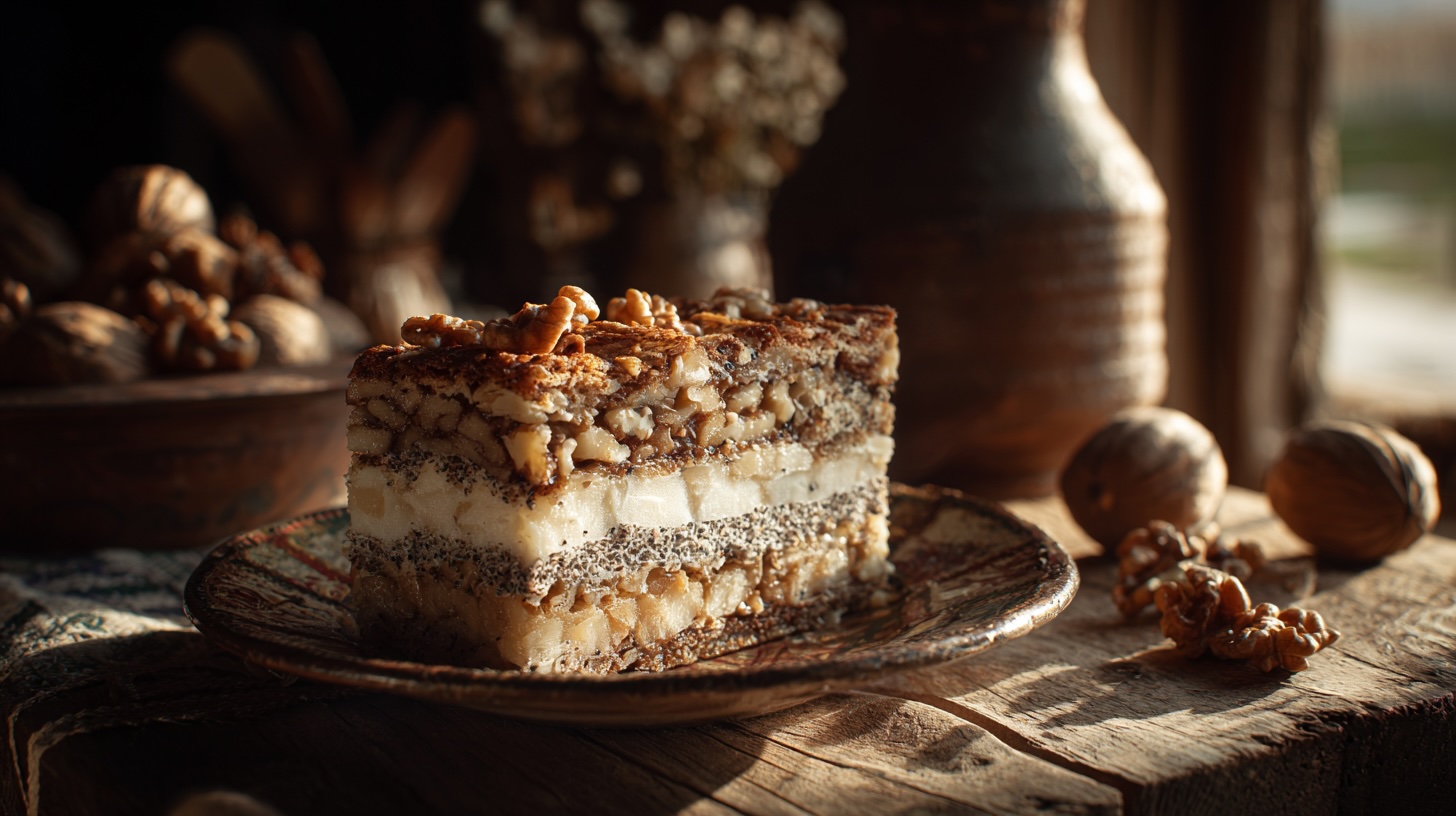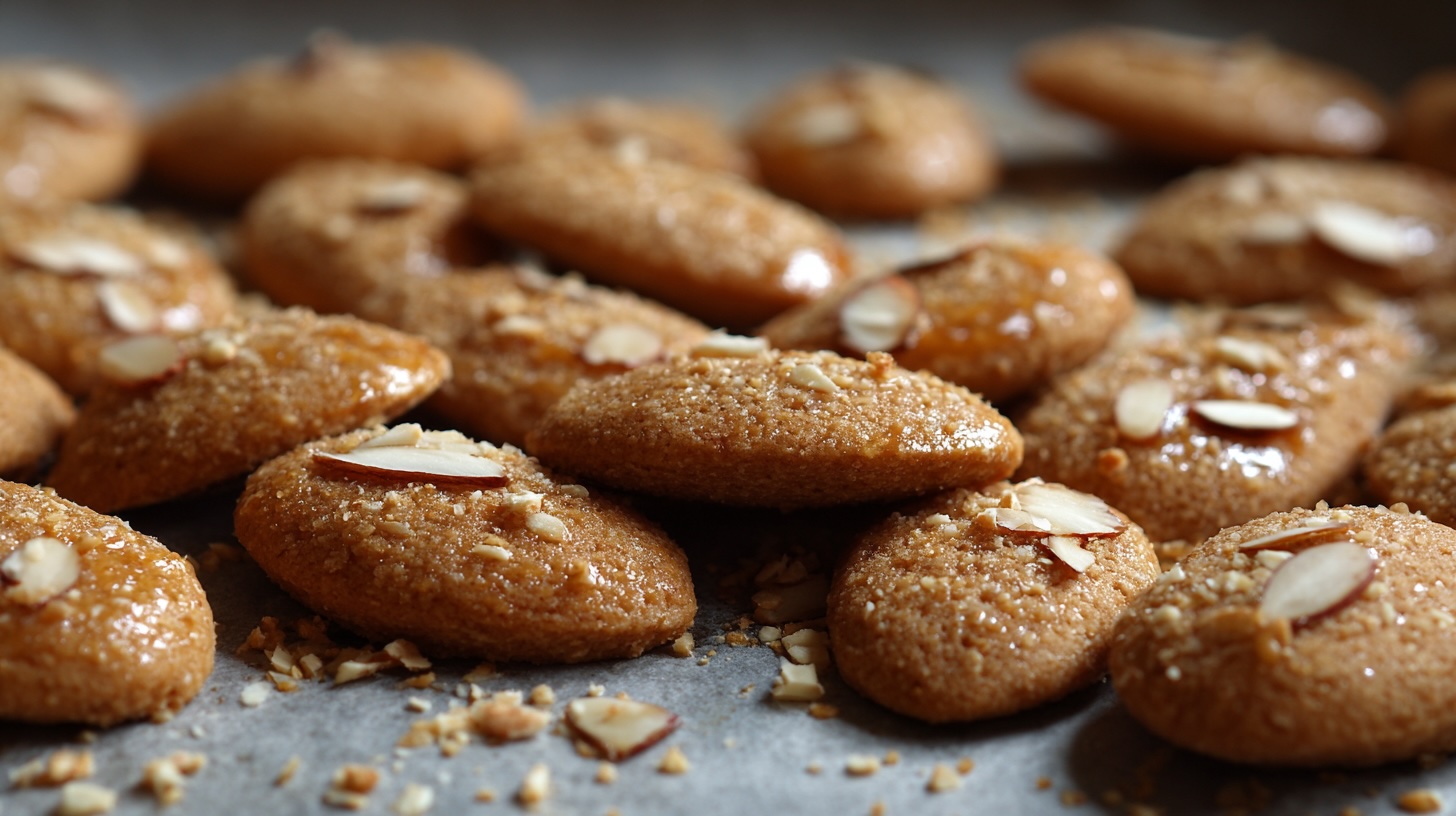Meskouta Cake: A Citrus and Almond Treat
There’s something charmingly old-fashioned about Moroccan cakes. They’re never drowning in buttercream, rarely layered to the heavens, and never demand a degree in pastry engineering to make. They are, instead, exactly what cake used to be before it became a showpiece: fragrant, humble, and meant to be shared with mint tea on a sunny terrace. And among them, none is more beloved than the Meskouta cake. A golden, ring-shaped sponge dusted with sugar and smelling faintly of orange, it’s the kind of dessert that could easily win a bake-off without even trying. It’s simple, yes, but that’s precisely its trick.
Meskouta, or “maskouta” depending on who’s doing the transliteration, is Morocco’s everyday cake. Not the kind you reserve for weddings or Eid celebrations. It’s the one your grandmother made when the neighbour was coming over, or when the kids came home from school with a sweet tooth and muddy shoes. Its history is quietly domestic, rooted in the rhythm of Moroccan homes more than the annals of royal feasts. The word itself is thought to come from the Arabic “maskouta,” meaning “beaten,” a nod to the vigorous whisking once done by hand, long before electric mixers whirred through kitchens.
In the days before supermarkets stocked baking powder, Moroccan women relied on air, elbow grease, and faith. Eggs were beaten to a pale froth, sugar folded in, and oil whisked until the mixture lightened to the colour of the Casablanca sun. Each region then gave it a twist of its own. In the north, near Tangier, you might find Meskouta perfumed with orange blossom water, its scent reminiscent of Andalusian patios. In Marrakech, the cake sometimes leans on lemon zest, a sharp antidote to the desert heat. Along the Atlantic coast, oranges rule the recipe, their zest and juice lending that sunny bitterness that cuts through the sweetness.
What makes Meskouta so loved isn’t just the flavour – though the orange version does taste like breakfast and dessert had a baby. It’s the feeling of home it brings. There’s always a bottle of oil in the pantry, a few eggs, sugar, flour, and perhaps a sad orange waiting to redeem itself. It’s the cake of improvisation and hospitality, forgiving and generous. No one in Morocco has ever apologised for a slightly overbaked Meskouta; they just pour more mint tea and call it rustic.
Over the decades, this golden sponge has gone on quite the journey. In Morocco’s urban kitchens, it’s become the base for all sorts of playful reinterpretations. Some swirl in cocoa powder for a marbled effect; others add yoghurt for tenderness. There’s even a generation of bakers who have turned Meskouta gluten-free, replacing wheat with almond or rice flour, though your grandmother might raise an eyebrow at that. A few modern cafés serve it with pistachio drizzle or smothered in date syrup – because why not? After all, the soul of the cake remains unchanged: light, citrusy, and unpretentious.
Meskouta isn’t unique in its form – many Mediterranean and Middle Eastern cultures have a cousin of it. Spain has its bizcocho de naranja, Italy its ciambella, and France its quatre-quarts. But Morocco gave it personality. It’s less buttery than its European relatives and more aromatic, thanks to the abundant citrus and sometimes a touch of cinnamon or vanilla. It’s also dairy-free, making it perfect for hot climates and long storage – ideal for tea trays and road trips across the Rif mountains.
The ritual of eating Meskouta is almost as important as baking it. It’s never eaten in silence. There’s chatter, laughter, gossip, and usually a pot of fresh mint tea steaming in the centre of the table. Some prefer it with strong black coffee, especially in the morning, when the cake feels almost like a stand-in for toast. The orange-scented crumb pairs beautifully with espresso, the bitterness of the coffee cutting the cake’s sweetness. But the most traditional pairing remains Moroccan mint tea – green tea boiled with fresh mint and enough sugar to fuel an army. Together, the two create a kind of culinary harmony: the refreshing sharpness of the tea balancing the buttery warmth of the cake.
If you’re feeling adventurous, try pairing Meskouta with other Moroccan favourites. A small bowl of almonds and dates on the side enhances the cake’s citrus notes. A few slices of fresh orange sprinkled with cinnamon make a light dessert plate. Some even serve it with plain yoghurt, especially in the morning – a very North African take on breakfast cake. And then there’s the unspoken rule that everything tastes better when eaten with your fingers, preferably while sitting in the courtyard where the scent of orange blossoms competes with the smell of freshly baked sponge.
Beyond its taste, Meskouta holds a cultural significance that’s easy to overlook. It’s a symbol of hospitality – the idea that guests should always be welcomed with something homemade, even if it’s simple. In a world where coffee pods and delivery apps rule the kitchen, Meskouta remains gloriously analogue. You can’t rush it, and you don’t want to. The slow whisking, the aroma filling the house, the impatient checking of the oven door – it’s all part of the charm. It’s the cake that asks for presence, both from the baker and the eater.
Now, for the health-conscious among us, it’s worth mentioning that Meskouta is relatively modest compared to butter-heavy cakes. It’s usually made with vegetable oil instead of butter, which keeps it moist for days and lowers the saturated fat content. The use of fresh orange juice or zest adds a good hit of vitamin C, and because it doesn’t need frosting or cream, it’s lighter on sugar too. That said, it’s still cake – not a salad – so moderation, as always, is the golden rule. Those watching their gluten or sugar intake can easily adjust: almond flour works beautifully, and honey can replace some of the sugar. But try not to overthink it. The joy of Meskouta lies in its simplicity, not its nutritional label.
As for where to find it, the best answer is still: someone’s home. In Morocco, you’ll find it at every family gathering, tucked among platters of cookies, gazelle horns, and briouats. In cafés, especially in Marrakech and Essaouira, it’s often served with tea in the late afternoon, that golden hour when the sunlight hits the tiled courtyards just right. If you’re outside Morocco, look for North African bakeries in Paris, London, or Brussels. The diaspora has carried the recipe far and wide. In London’s Edgware Road or Shepherd’s Bush, a good Moroccan patisserie will almost certainly have it, maybe even still warm from the oven.
Of course, nothing beats baking it yourself. The recipe is so simple that once you’ve tried it, you’ll never forget it. It’s the sort of cake that forgives distracted bakers, overzealous zesters, and uneven ovens. The ingredients are few, but the alchemy is pure magic.
Moroccan Meskouta Recipe
To make a classic Moroccan Meskouta, start by gathering the essentials: eggs, sugar, vegetable oil, milk (or orange juice, if you’re going citrus), flour, baking powder, and flavouring. For an orange version, zest two oranges and squeeze one for juice. If you’re going for lemon, do the same but with lemons. Vanilla extract, cinnamon, or even a hint of anise can give it character.
Crack three eggs into a large bowl and whisk them with a cup of sugar until they turn pale and frothy. The goal here is volume – air is your friend. Slowly pour in a cup of oil while whisking continuously, then add the orange juice and zest. In a separate bowl, sift together two cups of flour and two teaspoons of baking powder. Gradually fold this into the wet mix, alternating with half a cup of milk or more orange juice until you get a smooth, thick batter. The smell at this point should be enough to make your kitchen feel like a Moroccan riad.
Pour the mixture into a greased bundt or ring-shaped tin – traditional for that classic look – and bake it in a preheated oven at 180°C for about forty minutes, or until a skewer comes out clean. The surface should be golden, with tiny cracks that hint at the fluffiness inside. Once it’s out, resist the urge to cut immediately. Let it cool for a while, then dust it with icing sugar or a light glaze made from orange juice and sugar.
There’s something rewarding about slicing into a Meskouta. The crumb is tender, almost melting, and the aroma clings to the air like a memory. It tastes best the next day, after the flavours have settled. It also travels beautifully, which explains why it’s often tucked into lunchboxes, picnic baskets, and suitcases headed across continents.
The best part? Every baker adds their signature. Some add yoghurt for moisture, some a handful of poppy seeds, and some a dash of rum essence for fun (though you won’t catch that in conservative kitchens). The point is not perfection but personality. Meskouta is less a recipe and more a philosophy: make do with what you have, share what you make, and never underestimate the power of citrus.
So next time you’re craving a sweet that doesn’t demand precision or pretense, remember the Meskouta. It’s the cake that built a thousand tea times, that bridged generations, that quietly defines Moroccan hospitality. Golden, fragrant, and gloriously simple – it’s proof that you don’t need layers of fondant to make people smile. You just need a whisk, an orange, and a bit of warmth in the kitchen.



